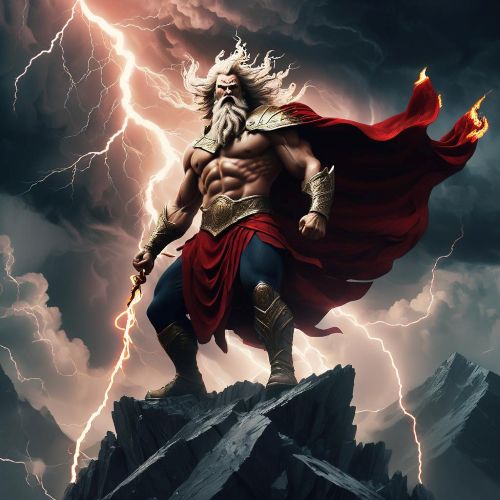Circassian Mythology
Circassian mythology is one of the most distinctive branches of the wider Caucasian mythological tradition, shaped by the culture, history, and environment of the Circassian people, also known as the Adyghe. Rooted in the mountains and valleys of the Northwest Caucasus, these myths reflect the values of bravery, honor, hospitality, and resilience that were central to Circassian life. Like many oral traditions, Circassian mythology was transmitted through storytelling, songs, and rituals, preserving a worldview where gods, heroes, and spirits interacted with humans in a complex web of relationships. It is most famously represented through the Nart sagas, a cycle of epic tales shared with other peoples of the Caucasus but told with uniquely Circassian characters, themes, and cultural expressions.
At the core of Circassian mythology are powerful deities and supernatural beings who governed natural forces and human destiny. Theshxwe, the supreme god, was often regarded as the overseer of the cosmos, while lesser deities and spirits controlled fire, water, fertility, and protection of the community. Fire was especially sacred in Circassian belief, symbolizing purity, life, and divine presence, and rituals often involved its veneration. Alongside the gods, mythical creatures such as dragons, giants, and shape-shifting beings appeared in Circassian stories, frequently serving as obstacles for heroes to overcome. These myths were not only tales of wonder but also moral lessons that taught courage, wisdom, and unity in the face of adversity, reflecting the values and identity of the Circassian people.
The Nart sagas form the most enduring and celebrated aspect of Circassian mythology. These epic tales recount the lives and adventures of the Narts, a race of semi-divine heroes who embodied strength, honor, and cunning. Among the most famous are figures like Sosruko, the fiery and cunning trickster-hero, and his mother Lady Satanaya, who symbolized wisdom and fertility. Their stories blend heroism with tragedy, exploring themes such as the pursuit of justice, the cost of pride, and the tension between individual ambition and communal responsibility. Unlike other mythologies where heroes are portrayed as flawless, the Narts are often deeply human in their flaws and struggles, which makes their stories resonate with universal truths. These epics continue to serve as a cultural cornerstone, linking modern Circassians to their ancient past.
Today, Circassian mythology remains a vital part of cultural identity and heritage for Circassians around the world, especially within diaspora communities. While historical upheavals and displacement affected the preservation of many traditions, the myths and legends live on through literature, music, art, and modern retellings. Festivals and cultural events often draw on mythological themes, ensuring their relevance in contemporary life. Scholars and enthusiasts alike study Circassian mythology not only for its unique stories but also for its connections with other great epic traditions of the world. As interest in global folklore grows, Circassian mythology is gaining recognition as a treasure trove of ancient wisdom, heroic sagas, and spiritual insights that reflect the resilience and creativity of the Circassian people.


